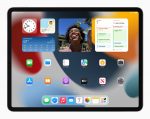Apple will be ditching Intel and transitioning the Mac to ARM based processors over the next two years. I’m actually surprised it hasn’t happened before now, but here we are. The Mac lads are now full steam ahead, making their fourth major architecture change since the dawn of the platform in 1984.
The move makes sense too. Apple’s A series silicon has been dominating the mobile scene for some time now. The A13 Bionic now rivals high end Comet Lake and Zen 2 chips from Intel and AMD respectively. At least in single core performance, in Geekbench. Of course it’s difficult to compare apples to apples here (excuse the pun) as ARM and x86 utilize two different computing philosophies. However, the benefits to Apple are fairly obvious. The A-Series are more power efficient than Intel’s current mobile offerings, and run cooler. Allowing for greater battery life in laptops, which can be made thinner and lighter since they don’t require robust cooling systems. All without any performance penalties compared to their current platforms. Not to mention other mobile benefits such as instant on, and very low standby power requirements.
More importantly though, it now gives Apple full control of their hardware. Which they can design to tightly integrate with their software. Those iPhones don’t hit those performance metrics with brute force alone.
Not only that, but it allows Apple to create a truly unified ecosystem between their mobile, laptop, and desktop lines. While there’s always been this barrier between MacOS and iOS, Apple has been slowly blurring the lines between the two over the past several years. iPad OS in particular has gotten more desktop like, while the Mac has seen many features from mobile incorporated into its environment. This move sort of brings us full circle. In theory, you should now be able to start a project on your iMac, then seamlessly transition it to your iPad when you’re ready to leave the office. All while running the exact same software suites. Microsoft attempted something similar with mixed results, but for Apple, it’s a natural move. Plus it gives developers a single platform to focus on, rather than two fragmented ones.
While I do expect some teething in the early days, Apple seems to have planned things out better than their transition from PowerPC to x86 back in 2006. Rosetta 2 seems better at emulating traditional apps this time around. Plus major developers like Adobe and Microsoft already have full fat ARM versions of their Mac suites well in development. So I think this is mostly going to be a positive move for end users.
Mostly positive, as there are still some questions up in the air. The one big fear going around, which is certainly no stranger to Mac aficionados, is the ARM transition might cause Apple to wall off Mac OS. Much in the same way iOS operates under a walled garden. While Mac OS is actually quite powerful if you know what you’re doing, iOS does not share that same philosophy. It would be a shame to see open development for the platform disappear. Especially considering that the App Store tends to be fairly strict regarding what apps it approves. So no game emulators, torrent managers, or anything else Apple might deem cheeky. Plus they’ve never supported open source projects all that well. At least in the past. Maybe that’s changed, but it’s been a few years since I’ve actively used iOS. So hopefully they’ll commit to keeping ARM Mac OS open even as everything else melds into one.
But what does this mean for computing as a whole. Ah, that’s the billion dollar question. And to be honest, I don’t think this move is going to impact neither Intel, nor the PC market, all that much.
While it seems like Apple has launched a major coup against Team Blue, Macs make up a very small portion of their total CPU sales. This certainly isn’t good news for them. Especially with a newly invigorated AMD biting at their heels. However, Intel still, by and large, has the enterprise market on lock down. When it comes to hardware sales, enterprise has always been a major racket, and their bread and butter. So I doubt Bob Swan et al are losing much sleep over this.
Besides, Apple isn’t exactly the first computing company to push for a transition to ARM. Microsoft has been trying off-and-on over the last few years with their own laptop lines. First with the original Surface, and more recently with the Surface Pro X. The problem is that ARM based Windows PCs don’t have anything close to Rosetta 2. They can only run x86 apps obtained through the Microsoft Store. Which, if you haven’t checked it out recently, is definitely still a wasteland.
This is not to mention the fact that non-Apple ARM chips are quite a bit shit. Even the highest end Qualcomm SoCs are soundly beat by the humble Core i3-6100. Generally showing rather lacklustre performance across the board. They’re fine for smartphones, but not for serious computing. The SQ1 chip in the Surface Pro X still falls about 40-50% behind the latest iPad Pro according to reviews. Which, yeah, if I’m spending $1,200 on an ARM tablet, I know what I’m getting.
Meanwhile, AMD has been making great strides in mobile x86 processors. With their Zen 3 based Renoir chips laying a resounding smackdown on Intel’s mobile processors, both in terms of performance and power efficiency. Which, to be honest, is pretty close to what Apple is promising for their ARM based computers. So PCs really wouldn’t benefit from a transition. Not to say they wouldn’t in the future, but for now, it makes little sense to push for an entirely new platform. At least not until Samsung and Qualcomm finally get their act together. Even then, good luck getting everyone on the same page.
Image by Karim Andary via Wikimedia. Used under Creative Commons license.



